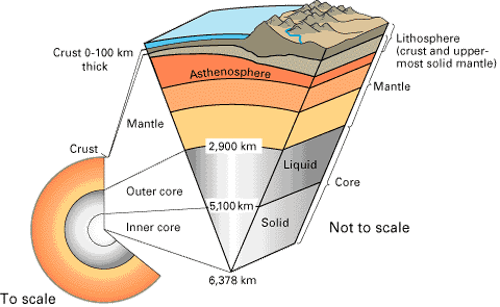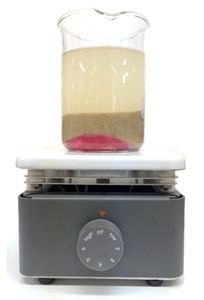My Cart
Your Shopping Cart is currently empty. Use Quick Order or Search to quickly add items to your order!
Heather Haley
Product Developer

The structure of the earth has 3 basic parts: the heat-producing core; the ductile mantle; and the thin, rigid crust. See Fig. 1. The mantle separates the outer crust of our planet from the core at its center.
The core is separated into 2 regions: inner and outer. The inner core is the hottest part of the earth. In spite of the intense heat generated there, the intense pressure exerted on the core keeps it solid. By comparison, the outer core, which is under less pressure, is liquid.
The mantle is also divided into regions. Above the outer core is a rigid layer of mantle called the mesosphere. On top of the mesosphere is the asthenosphere—a viscous layer of mantle that moves very slowly under pressure. The uppermost layer of the mantle is cool and contains rigid, brittle rock. This portion of the mantle is part of the outer shell of the earth, called the lithosphere.

The lithosphere also contains the earth’s crust, which can be oceanic or continental. Although both are made of solid rock, continental crust is thicker and less dense than oceanic crust. When temperature and/or pressure increase, parts of the lithosphere can melt and create molten rock. When the molten rock forms underground, it is called magma. Magma can collect in a pocket under the crust called a magma chamber.
If conditions are right, temperature and/or pressure inside the magma chamber can increase and push magma into the crust above it. If the magma chamber is located near a weak place in the earth’s crust, the crust can break open and create a volcano. A volcano allows gases and molten rock, now called lava, to escape to the surface.


 |
 |
|---|---|
| Figure 4 Wax breaking through sand. | Figure 5 Wax solidifying in water. |
While you are waiting for wax to melt and break through the sand, discuss what is happening inside the beaker and how it is similar to the formation of a volcano. As the temperature increases, a pocket of melted wax forms (magma chamber) beneath the sand (crust and/or lithosphere). As temperature increases further, pressure does as well. The melted wax expands and begins to push up into the layer of sand. When the melted wax (magma) breaks through the layer of sand it comes gushing out into the water (volcanic eruption of lava). Note: If the volcanic eruption is occurring over land, the water represents the atmosphere. If the volcanic eruption is occurring underwater, the water represents the ocean and the air above it represents the atmosphere.